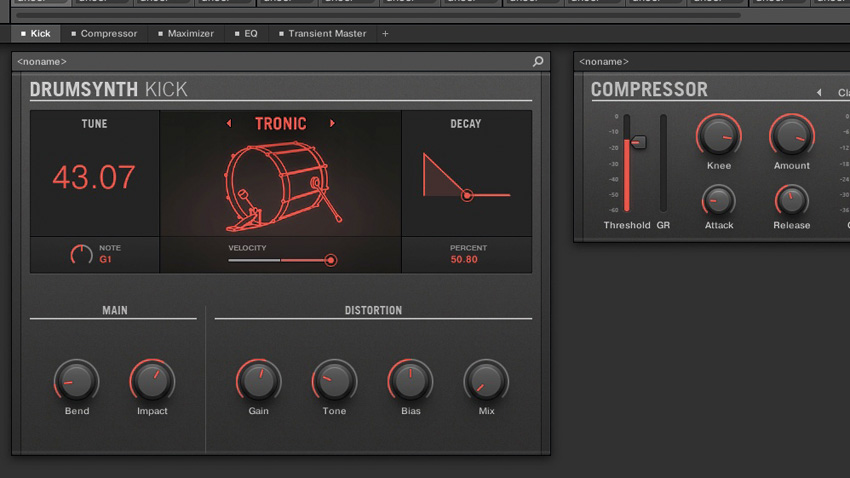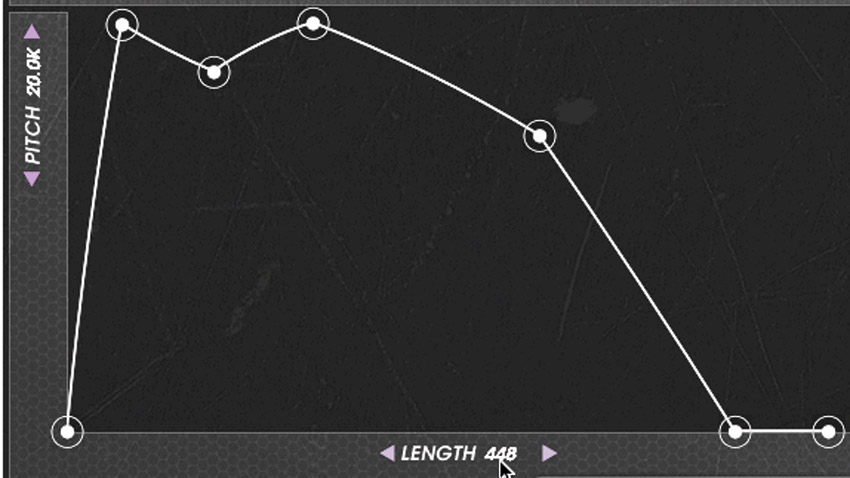9 ways to improve your synth drum sounds
Synthesisers aren't just for basses, leads and pads, you know…

Make better electronically-sourced beats with our inspirational tips, techniques and ideas.
For more on synthesising drums, get hold of the January 2018 edition of Future Music.
1. Pitching for business
Manipulating the pitch of synth drums, particularly toms, can throw up all sorts of interesting sounds. Route velocity to pitch or select alternative (non-chromatic) tuning scales. Sometimes you’ll want your toms to behave with ‘regular’ synth tuning, but sometimes you won’t.

2. Looking for the perfect kick
How do you choose the ‘perfect’ kick drum for your track? You might be seduced by the first sound you audition that seems to provide the requisite amount of welly and thwack, but it’s worth being more considered in your choices - two specific areas, in particular.
First, look to design a kick that lets you accurately map its pitch from the moment it starts, all the way through to the end of its decay, with multiple envelope breakpoints. Each stage of its pitch evolution will then be ‘pinned’ by notes relating to the chords of the track.
Second, adjust the kick’s length to ensure that whilst each hit produces a weighty thump, its decay doesn’t last long enough to suck clarity from the mix. You’re looking for punch, of course, but also a kick that knows when to be stay out of the way. Other ‘low’ mix elements, such as the bassline, will thank you for the extra space.
3. Keep it unreal
Don’t program different drum patterns in every bar if you’re after a classic drum machine sound. With classic drum synth sounds, the ‘human’ approach a real drummer might employ (with flams, fills and tricks aplenty) rarely yields great results.
Want all the hottest music and gear news, reviews, deals, features and more, direct to your inbox? Sign up here.
4. Shape sounds with multiple envelopes
As you’ll quickly discover, a huge part of drum and percussion synth programming comes down to envelope shaping. Using multiple envelopes offers a real advantage, as it’s likely that you’ll want independent control over pitch (for a slight bend accompanying every hit), volume (usually a quick attack, decay to taste, no sustain and a short release) and filter. Even the tiniest adjustments to envelope parameters can make a substantial difference.
5. Maximum velocity
Do pay attention to velocity values when using classic drum machine samples. Sometimes the most authentic results come from setting all velocities to the same value, or limiting choice to three values: loud, medium and soft.
6. Create synth drum kits
Creating drum and percussion sounds with synthesisers is fun and creative, but for playing your sounds back and having ready access to them in future projects, loading multiple synth sounds can be a bit unwieldy. This is particularly true if your drum sounds ‘right’ on just one specific key. It’s worth, then, collating your synth kits in your sampler or playback engine of choice by building your own sampled drum machine. Dedicated sampling drum machines like NI’s Maschine are great for this purpose.
7. No limits
Don’t limit yourself to synth programming alone. Use effects processing, audio editing and re-sampling techniques to take your synthesised drum and percussion sounds further.
8. Consider your filter options
Don’t underestimate the role that your choice of filter type can play in the shaping of synth drum sounds. The core of a tom sound, for example, in its early stages is not so very different from that of a synth kick drum. But while synth toms benefit from band-pass or high-pass filtering to remove the lowest frequencies, those are exactly the ones you’d want to preserve when making a synth kick. With only a white noise generator, you could design a snare or a hi-hat, the only differences between them being amp decay time and filter type.
9. Make synth toms
As mentioned above, classic synth toms have a lot in common with synth kick drums. As a starting point, use triangle waves, either as single-oscillator sounds or stacked in octaves. A pitch envelope can ‘bend’ the start of each note, while amp envelopes can be longer than they might be for kicks during the decay phase. The most critical difference between toms and kick drums comes down to how their tone is manipulated: kicks always need low-end punch, but scooping some of that out can help define a sound as a tom.
Future Music is the number one magazine for today's producers. Packed with technique and technology we'll help you make great new music. All-access artist interviews, in-depth gear reviews, essential production tutorials and much more. Every marvellous monthly edition features reliable reviews of the latest and greatest hardware and software technology and techniques, unparalleled advice, in-depth interviews, sensational free samples and so much more to improve the experience and outcome of your music-making.
